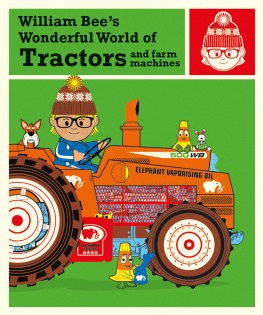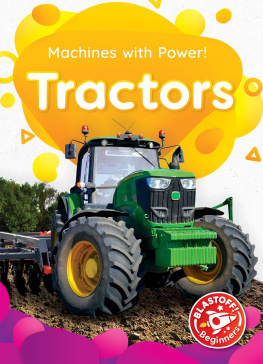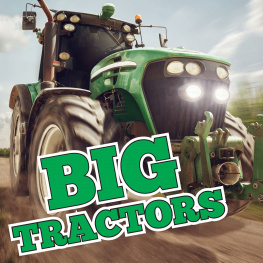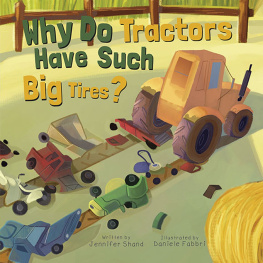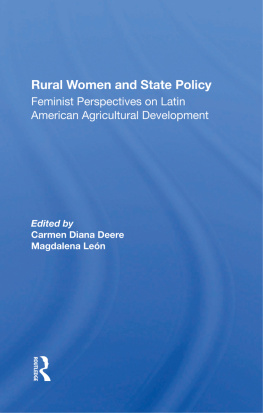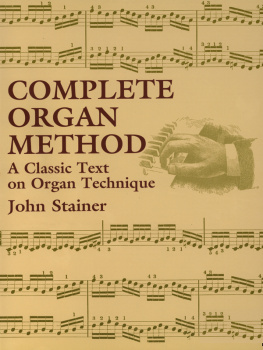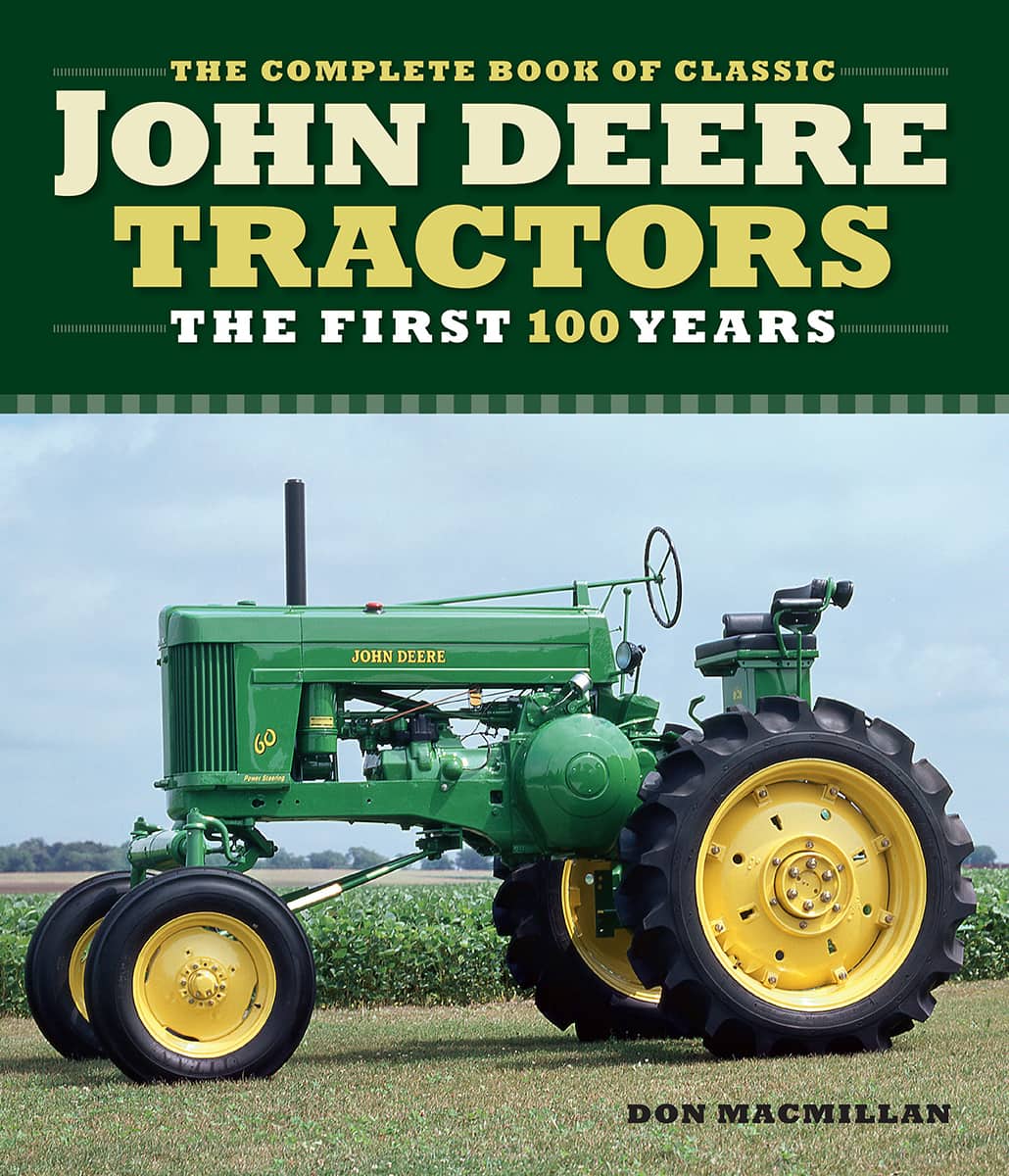A replica of the Froelich tractor built by workers at the Waterloo, Iowa, tractor works in 1937. The Froelich replica was on display at Deeres Moline administration center.
A drawing of the Froelich tractor from the original brochure. Motorbooks Archive
In 1911, the firm returned to the tractor business and, after years of development, produced a reliable tractor, the Model R, that was both inexpensive and simple to operate and maintain, making it ideal for the farmers of the day, who were inexperienced with operating the newfangled machinery. This first tractor was advertised as the Waterloo Boy One Man Tractor with the Practical Plow Hitch; this Model TP Four-Cylinder Standard Wheel model was introduced for larger farms. It was powered by a cross-mounted, L-head, four-cycle, water-cooled engine with a bore and stroke of 5.50x6.00 inches (137.5x150 mm). The Model TP featured two forward and one reverse speeds, automotive-style steering, and a mounted plow with four 14-inch (35-cm) bottoms and power lift.
A version of the Model TP was introduced in 1913 with Caterpillar-style tracks and called variously the Sure Grip, Never Slip, and Model P. As an advertisement of the day noted, it was sold at a price that is within the reach of every farmer who owns 160 acres of good land.
WATERLOO BOY MODELS L, LA, C, H, R, AND N, 19131924
Later in 1913, the Model L, or Light Tractor, was added to the Waterloo Boy line. The L featured a mounted two-bottom plow and was powered by a horizontally opposed, two-cylinder engine of 6.00x6.00 inches (150x150 mm) that produced 15 hp at 500 rpm. Records show that twenty-nine Model L and LA tractors were delivered during 1914.
Advertisements of the day indicate that two other models were also offered. The Model C tractor used the same engine as the L but featured all-wheel drive. The larger, 25-hp Model H featured a 7.00x7.00-inch (175x175-mm) engine running at 450 rpm. The H weighed 6,500 pounds (2,925 kg) compared with the 3,000 pounds (1,350 kg) of the L, and both models had automobile-type steering and forward speeds of 2 to 2/ mph (3.2 to 3.6 kph) for plowing and 3 mph (4.8 kph).
During 1914, a new model was developed with a twin-cylinder, side-by-side engine that was to become the standard engine style of the Waterloo Boy and Deere tractors for the next forty-six years. The predecessor of the lineage was the Waterloo Boy Model R.
This Model R Style G, number 1568, is the oldest known Waterloo Boy. it has the L-head motor and the small-diameter dual kerosene gas tank. The radiator was positioned on the right side; it was soon moved to the left to improve driver vision. Owner: Travis Jorde.
Waterloo Boy Model R Style H, number 2512. Note the left-hand radiator, larger-diameter kerosene-only tank, and red engine color.
From 1914 to 1917, the Model R appeared in twelve different styles: the first four, styles A through D, had 5.50x7.00-inch (137.5x175-mm) L-head motors; the next seven styles, E through L, had an increased bore of 6.00 inches (150 mm); the final style, M, had a 6.50x7.00-inch (162.5x175-mm) engine. Strangely, the Model R was fitted with a single forward speed and chain steering, which was seemingly a step backward in progress.
1924 Waterloo Boy N. Ralph W. Sanders/Motorbooks Archive
The two-speed Model N was introduced in 1917 and finally acquired automotive-style steering in 1920 together with other modifications, including a higher fuel tank position and a riveted frame. In 1924, concurrent with production of the Deere Model D tractor, ninety-three Model N tractors were built to use up existing parts and numbered from 31320 to 31412.


